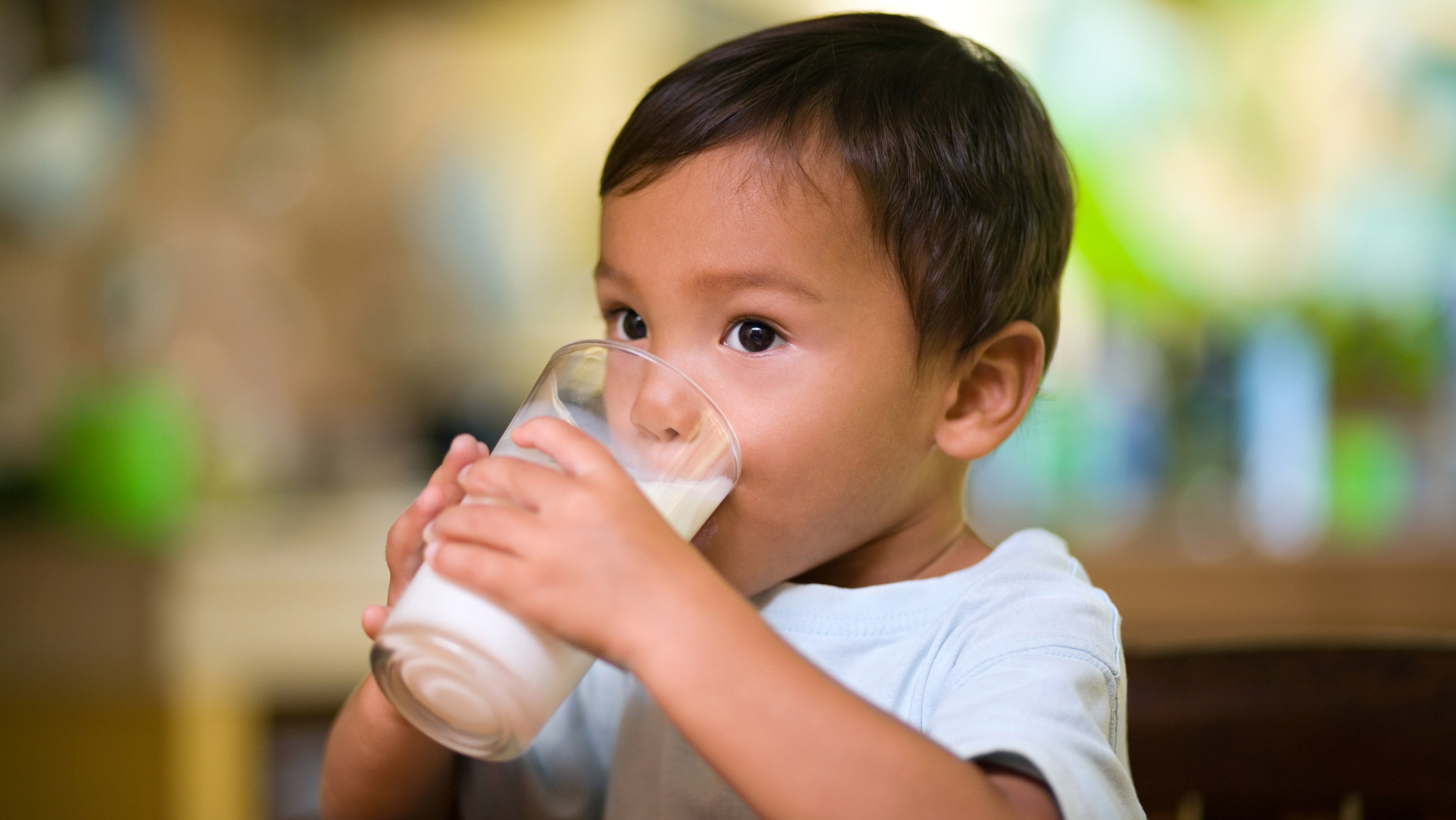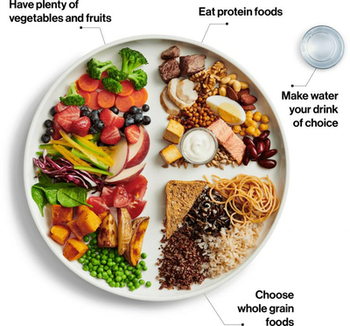Milk at meals and snacks: more than hydration
- Written by: Alberta Health Services, Nutrition Services

Early learning and child care programs play a key role in food and nutrition for the children in their care. Use Canada’s food guide plate to plan meals and snacks with ½ vegetables and fruit, ¼ protein foods, and ¼ whole grain foods.1 This will help meet children’s nutritional needs so they can grow strong and healthy.
How does milk fit with feeding young children?
Since the release of Canada’s food guide in 2019, a commonly asked question is how milk fits with feeding young children.

The food guide recommends eating food that has calcium at all meals and some snacks,2 and to have foods that have vitamin D each day. This helps young children to grow and form strong bones and teeth. Milk and fortified soy beverage are protein foods and are good sources of calcium and vitamin D.3 Other plant-based beverages, like almond or oat beverage, are low in protein and not all are fortified. They can be offered in small amounts, such as when making oatmeal, however, offering these beverages frequently as drinks put children at risk for nutrient deficiencies.3
Check out our CHEERS Blog on Canada's food guide for more connections for implementing Canada's food guide in early learning and child care.
Two cups (500 mL) of milk or fortified soy beverage a day can help meet young children’s needs for protein, calcium, and vitamin D.
Since young children may spend a large portion of their day at a child care program, offering milk at a meal or snack time is a practical way for child care programs to support children’s nutrition needs.
Here are tips for offering milk in your child care program:
- Children 1 to 2 years
- Offer full fat homogenized 3.25% M.F. (milk fat) milk for children 1 to 2 years.4
- Soy beverage is not recommended for children under 2.
- Children 2 years or older
- 1% or 2% milk may be offered for children 2 years or older.
- If offering soy beverage to children 2 years or older, choose one that is unsweetened and fortified.
- Overall
-
- Use plain milk and yogurt, or fortified soy beverage instead of fruit juice if making smoothies.
- If parents are providing breastmilk or infant formula for their child, continue to provide it instead of milk or fortified soy beverage.
- Offer water throughout the day between meals and snacks.5
Having healthy foods and drinks allows children to grow, develop and play! Offer milk or fortified soy beverage in 125 mL (1/2 cup) to drink at meal or snack time.
For more information, see these Alberta Health Services resources:
References
-
Health Canada (2019). Canada’s Food Guide. https://food-guide.canada.ca/en/
-
Health Canada (2019). Calcium. https://www.canada.ca/en/health-canada/services/nutrients/calcium.html
-
Health Canada (2022). Canada’s Dietary Guidelines. Canada Food Guide. https://food-guide.canada.ca/en/guidelines/#applying-guidelines
-
Alberta Health Services (2023). Offer water and milk to drink. https://www.albertahealthservices.ca/assets/info/nutrition/if-nfs-cc-offer-water-and-milk-to-drink.pdf
-
Health Canada (2021). Make water your drink of choice. https://food-guide.canada.ca/en/healthy-eating-recommendations/make-water-your-drink-of-choice/